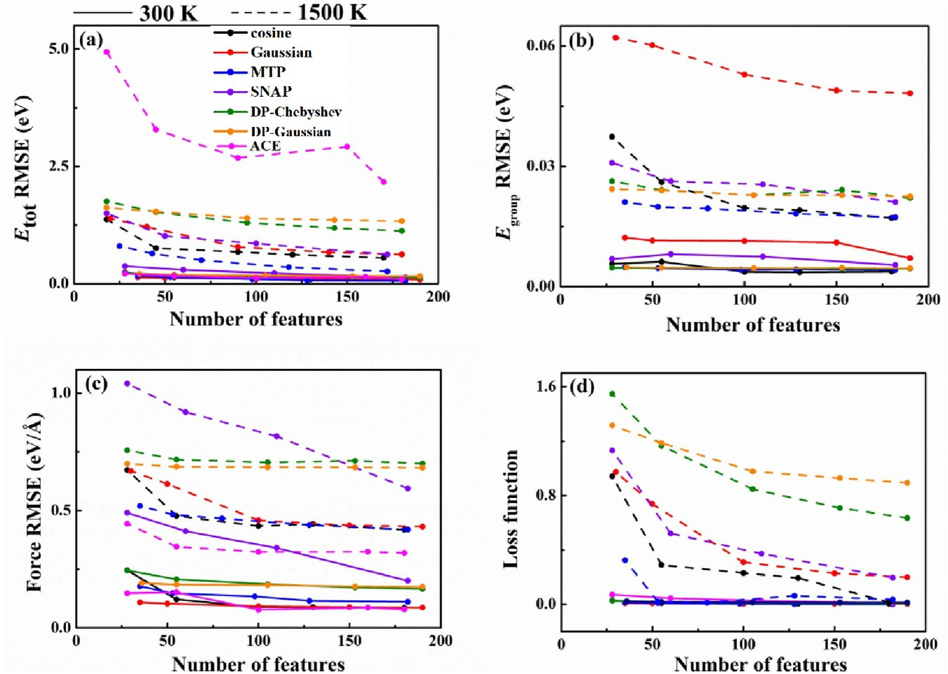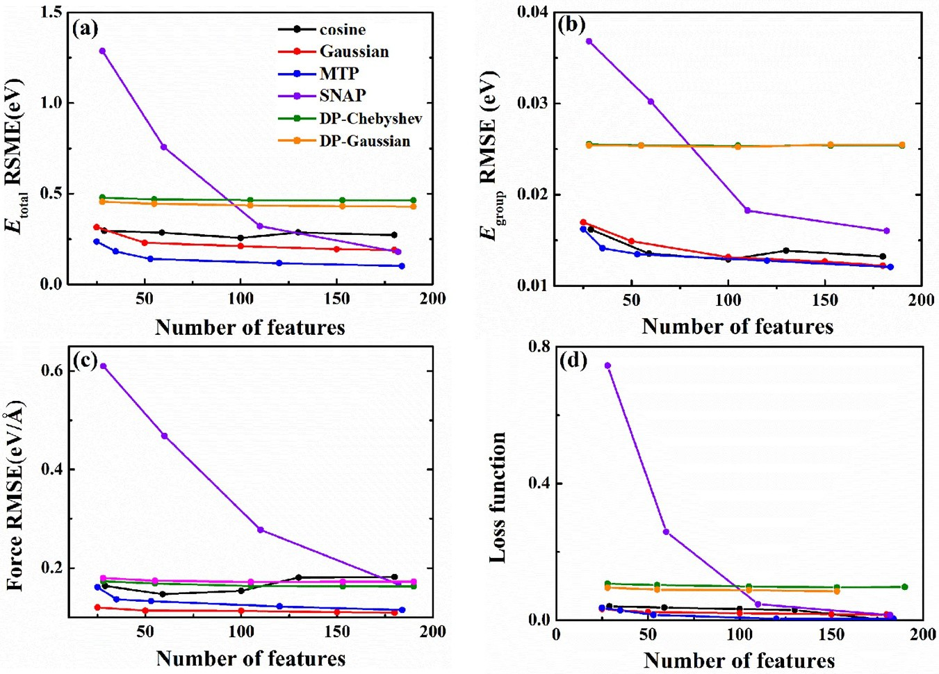1. Comparison of Features
[Paper Accuracy evaluation of different machine learning force field features]
This work compares the differences in the ability of feature types in PWMLFF to describe physical systems. These feature types include cosine features, Gaussian features, moment tensor potential (MTP) features, spectral neighbor analysis potential (SNAP) features, simplified smooth deep potential with Chebyshev polynomial features and Gaussian polynomial features, and atomic cluster expansion features. For a detailed introduction to the features, please refer to [Feature Wiki].
DFT Data
For the sulfur system, NVT AIMD simulations were performed at 300K and 1500K, and molecular dynamics simulations were conducted for 2 ps at 300K. These simulations yielded 2000 structures at 300K. For 1500K, a 3 ps molecular dynamics simulation was followed by a 2 ps AIMD simulation, resulting in the training dataset at 1500K. The sulfur ring broke during the simulation, presenting a system structure with broken bonds.
For the carbon system, four different carbon structural phases were selected, and NVT AIMD simulations were performed from 300K to 3500K. To cover a broader configuration space, high-temperature simulation results at 3500K were also included in the training dataset. Each carbon phase was simulated for 1000 steps, yielding a total of 4000 structures as the training dataset.
| System | Description | Temperature (K) | Steps (fs) |
|---|---|---|---|
| Sulfur-300 K | α-S 128 atoms | 300 | 2000 |
| Sulfur-1500 K | 128 atoms | 1500 | 2000 |
| Diamond | 64 atoms | 300–3500 | 1000 |
| Graphene | 64 atoms | 300–3500 | 1000 |
| Graphenylene | 64 atoms | 300–3500 | 1000 |
| M-carbon | 64 atoms | 300–3500 | 1000 |
Details of the sulfur and carbon systems and their AIMD steps
Partial Experimental Results

Training errors for different feature types on the Sulfur-300 K dataset (solid line) and Sulfur-1500 K dataset (dashed line) for (a) total energy, (b) atomic energy, (c) force, and (d) loss function.

Training errors for different feature types on the combined carbon system datasets for (a) total energy, (b) atomic energy, (c) force, and (d) loss function.